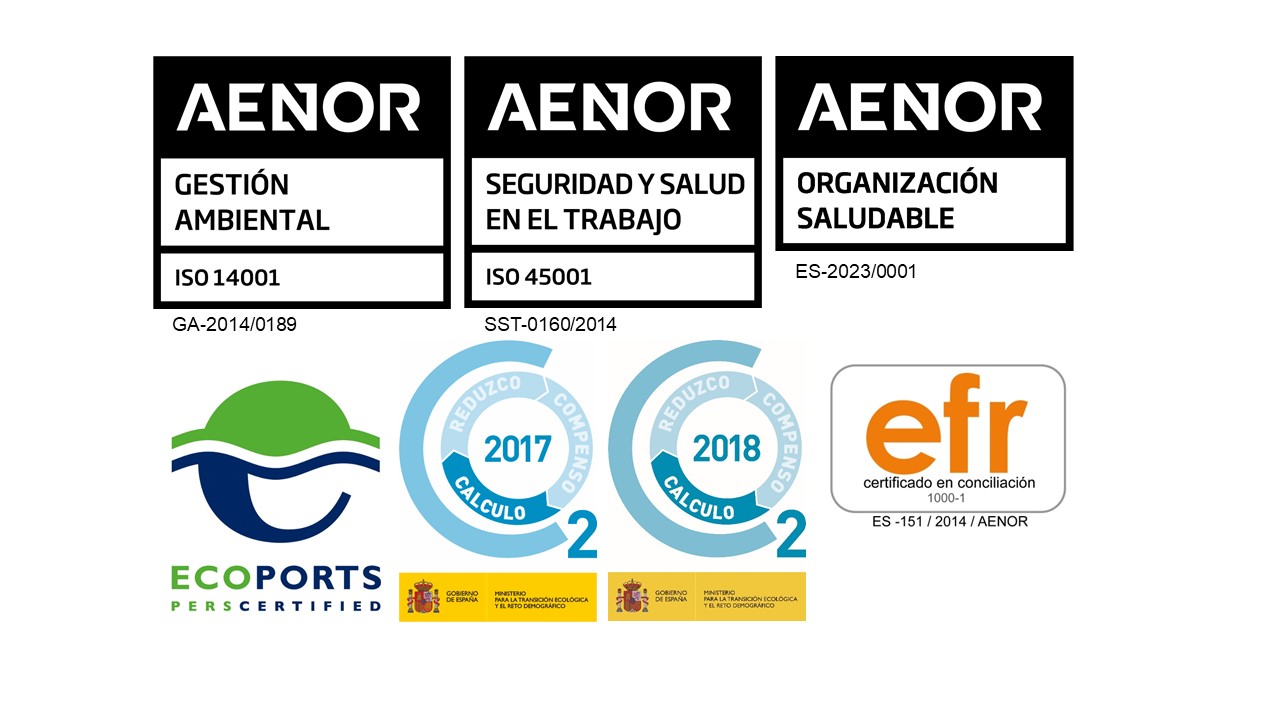Emergency Plans
Internal Emergency Plan
Entry into force on February 2008
The Internal Emergency Plan for ports under the authority of the Port Authority of Santa Cruz de Tenerife is a document that defines the organisational structure, the set of human and material resources available and the protocols for action provided for in ports, in order to prevent accidents of any kind and, should they occur, to deal with the incidents in an organised manner, mitigating their effects inside the facilities.
Protecting persons, containing and controlling incidents and minimising damage to the environment are the main targets set down in this plan, operative in the Port of Santa Cruz de Tenerife since 2003.
In 2008, eleven drills were conducted inside the facilities of the Port of Santa Cruz de Tenerife.
The Port Authority of Santa Cruz de Tenerife keeps the Internal Emergency Plans of the ports updated. The sixth revision of February 2008 is currently in force.
Marine Pollution Contingency Plan
Law 48/2003, of 26 November, on the Economic Regime and the Provision of Services in Ports of General Interest and Royal Decree 253/2004, of 13 February, setting out measures to prevent and fight against marine and ports pollution by hydrocarbon in the loading, unloading and handling operations.
An accidental marine pollution contingency means any event, resulting from an uncontrolled spill, arising from hydrocarbons loading, unloading and/or handling operations, involving a serious risk, catastrophe or public calamity, immediate or delayed, for people, property and the environment, in port service areas and requiring priority attention and mobilisation of resources in this port area.
In order to minimise the consequences of this type of pollution on people, the environment and facilities, the Port Authority of Santa Cruz de Tenerife draws up an Internal Contingency Plan for Accidental Marine Pollution (PICCMA) for every port, thus complying with the legal requirements for the control of sea, land and air pollution in the port service areas: Law 48/2003, of 26 November, on the Economic Regime and the Provision of Services in Ports of General Interest and Royal Decree 253/2004, of 13 February, setting out measures to prevent and fight against marine and ports pollution by hydrocarbon in the loading, unloading and handling operations.
The PICCMA aims to reflect the roles of the Port Authority during situations of accidental marine pollution by hydrocarbon in the port service areas, as well as to specify the tasks of collaboration and coordination between the various agents involved: Port Authority, Harbour Master’s Office, Sasemar, concessions and affected facilities.
PICCMA’s scope of action is the port service area and, in particular, those places where situations of contingencies due to accidental marine pollution by hydrocarbon may take place, arising from concessions or activities affected by Royal Decree 253/2004.
These internal plans also include an interface that allows connection with the whole contingency plans; those of the facilities or activities affected, the National Contingency Plan and the Territorial Contingency Plan, to ensure, through appropriate cooperation and coordination of those involved in an accidental marine pollution, the following:
• Prevention of emergency situations, where possible.
• Safely control of the consequences of an emergency.
• Health, human lives and environment protection.
• Minimise damage to affected facilities and the environment.
• Communication of relevant information to the authorities and the population.
The PICCMA for ports under the authority of the Port Authority of Santa Cruz de Tenerife has also been established in accordance with the requirements laid down in the various international conventions ratified by the Spanish State, in fighting against marine pollution by accidental spills of polluting substances, in particular the provisions of the International Convention on Oil Pollution Preparedness, Response and Co-operation (OPRC 1990).
The development of the PICCMA therefore responds to the line drawn by the Port Authority of Santa Cruz de Tenerife, for the achievement of quality in the development of the port activity, relying on respect for the environment, the security of the facilities and operations carried out in the port service areas, the prevention of risks and the adaptation to port legislation, among other cornerstones.
Finally, it should be pointed out that the Port Authority has established a standard for the hydrocarbon-free water surface, which means that any observed alteration is considered a release and the action plan is immediately activated.
With this practice, the statistical data of these incidents do not benefit the ports under the Port Authority of Santa Cruz de Tenerife, since they are considered as spills and discharges, which in other facilities in the European Community are not even considered as incidents. On the other hand, this approach allows the Port Authority of Santa Cruz de Tenerife to be vigilant and to raise the awareness among the Port Community about the importance of good environmental practices.
In order to respond in as efficient and well-coordinated a manner as possible to disasters and risk situations, the Port Authority of Santa Cruz de Tenerife carries out regular drills by coordinating all parties concerned. Photos of two simulation exercises in San Sebastián de La Gomera and La Estaca.
Related legislation
The legislation applicable to the current Internal Emergency Plan of the Port of Santa Cruz de Tenerife is the following:
• Regulation 145/1989 on the Admission, Handling and Storage of Dangerous Goods in Ports.
• Law 62/1997 modifying Law 27/1992 on State Ports and the Merchant Marine.
• Law 31/1995 on Occupational Risks Prevention and complementary legislation.
• Law 2/1985, of 21 January, on Civil Protection and complementary legislation.
• Applicable environmental legislation.
• Royal Decree 1254/1999 which approves measures for control of risks inherent in serious accidents and in which dangerous substances are involved.
• The Carriage of Dangerous Goods by Road Regulations.
• IMDG Code.






